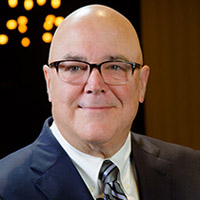Is Artwork a Good Investment?

Is Artwork a Good Investment?
If you collect rare and expensive art then chances are your collection is one of your most prized possessions. There are all kinds of art collectors, including those who collect for a hobby, those who use their collection as a business and others who collect art as an investment. Therefore, if you have an art collection then you have a lot of options as to what you do with it. However, using art as an investment can be a slippery slope. Collecting art as a hobby is, for the most part, very simple. Using an art collection strictly for business is fairly straightforward as well. Investing in art, on the other hand, can be very tricky.
Always Consider the Market
One of the first things to consider is the overall art market. While it might seem that artwork is bought and sold at a constant pace, the fact is according to some art market experts less than 1 percent of all paintings purchased end up being resold. So even though you can use art as an investment, be aware that the market is relatively small across the board. If you do have a piece that is likely to attract a nice payday then your best bet for selling it is to go through a fine art auction house. These auction houses will charge you a seller’s fee, but they are also more likely to attract wealthy buyers than the do-it-yourself online auctions.
Art Is a Long-Term Investment
Another important thing to keep in mind is that in almost all cases, art is an investment that takes time. Rarely can you purchase a piece of artwork and quickly turn around and sell it for a big increase. That means if you’re considering investing in art be prepared to hold onto it for a while before it makes any real gains. The market also tends to fluctuate a lot as the economy moves up and down. When things are good artwork and other collectibles are more likely to fetch higher dollar returns. On the flip side, when times are tough the value of these types of assets tends to decline.
The Tax Side of the Equation
Of course, as with any investment, you will also need to consider the tax implications of investing in art. The tax implications between someone who invests in art and someone who collects art can be substantial. The main difference between the two is that an investor purchases art with the purpose of profiting on it in the future. In any case, both collectors and investors must pay capital gains tax on any profit they make from their collection. If you’ve owned the art for more than a year it will be taxed at a rate of 28 percent. If you sell it within less than a year of first owning it then the profit is subject to the same rate as your other income.
Deductions and Losses for Investors
One more note: investors do have an advantage over collectors when it comes to deductions as they can deduct more of their related expenses than a hobbyist. Also, if your art investment losses exceed your gains then you can use those losses to offset other capital gains from your other investments.
We hope you found this article about “Is Artwork a Good Investment?” helpful. If you have questions or need expert tax or family office advice that’s refreshingly objective (we never sell investments), please contact us or visit our Family office page or our website at www.GROCO.com. Unfortunately, we no longer give advice to other tax professionals gratis.
To receive our free newsletter, contact us here.
Subscribe to our YouTube Channel for more updates.

Alan Olsen, is the Host of the American Dreams Show and the Managing Partner of GROCO.com. GROCO is a premier family office and tax advisory firm located in the San Francisco Bay area serving clients all over the world.
Alan L. Olsen, CPA, Wikipedia Bio

GROCO.com is a proud sponsor of The American Dreams Show.

The American Dreams show was the brainchild of Alan Olsen, CPA, MBA. It was originally created to fill a specific need; often inexperienced entrepreneurs lacked basic information about raising capital and how to successfully start a business.
Alan sincerely wanted to respond to the many requests from aspiring entrepreneurs asking for the information and introductions they needed. But he had to find a way to help in which his venture capital clients and friends would not mind.
The American Dreams show became the solution, first as a radio show and now with YouTube videos as well. Always respectful of interview guest’s time, he’s able to give access to individuals information and inspiration previously inaccessible to the first-time entrepreneurs who need it most.
They can listen to venture capitalists and successful business people explain first-hand, how they got to where they are, how to start a company, how to overcome challenges, how they see the future evolving, opportunities, work-life balance and so much more..
American Dreams discusses many topics from some of the world’s most successful individuals about their secrets to life’s success. Topics from guest have included:
Creating purpose in life / Building a foundation for their life / Solving problems / Finding fulfillment through philanthropy and service / Becoming self-reliant / Enhancing effective leadership / Balancing family and work…

MyPaths.com (Also sponsored by GROCO) provides free access to content and world-class entrepreneurs, influencers and thought leaders’ personal success stories. To help you find your path in life to true, sustainable success & happiness. It’s mission statement:
In an increasingly complex and difficult world, we hope to help you find your personal path in life and build a strong foundation by learning how others found success and happiness. True and sustainable success and happiness are different for each one of us but possible, often despite significant challenges.
Our mission at MyPaths.com is to provide resources and firsthand accounts of how others found their paths in life, so you can do the same.
The Power of One Buying Collective | Rod Smith
About Rod Smith Rod is the founder and CEO of Green Polkadot Box, a the nation’s first and currently the only “Health Merchant” network. His Company’s mission is empower professions to become Health Merchants in order “To help all people, young and old, learn about and understand true principles and practices that foster healthy…
Eliminating the Retail Mindset | Vaughn Peterson
About Vaughn Peterson Vaughn Peterson, the the founder and CEO of The Cambeo Group, a company the focuses on performance management in the retail industry. Prior to founding The Cambeo Group, Vaughn worked at Attensity Corporation and NexTalk Inc, Tenfold & Nortel Networks where he gained extensive experience in sales, HR and executive leadership.…
Inergy: Bringing Solar to Consumers | Sean Luangrath
About Sean Luangrath Sean Luangrath is the CEO of Inergy, a company dedicated to bringing solar energy to the consumer. Sean background is in business strategy, operations, finance and product development. Over the years he’s been highly involved in both large companies such as Apple as well as startups in the Tech industry. Prior…
Impacting Others Through Music
About Kurt and Katie Braun Kurt Braun is the President of the Higgins Braun Foundation. Kurt gained his appreciation for music as a student in Alameda, CA where he learned to play the trumpet- a talent that helped him earn the Bank of America Fine Arts Achievement Award. In 1982 he graduated from UC…




